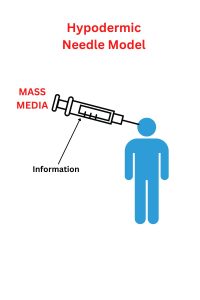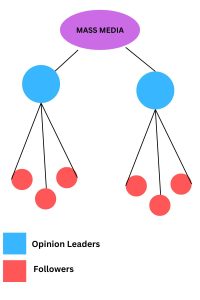2.1 The Evolution of the Study of Communication

The study of mass communication evolved considerably over time, from early philosophical discussions to a formal academic discipline. Although Greek philosophers Plato and Aristotle explored the power of rhetoric and its potential to influence public opinion, systematic theorizing about the impact of mass communication on society did not gain momentum until the late 19th century. French sociologist Gabriel Tarde was among the first to analyze the social implications of newspapers, public opinion, and imitation, laying the groundwork for an important field.
Early mass communication theories, such as the Magic Bullet Theory (also known as the Hypodermic Needle Theory), emerged during the 1920s and 1930s. This theory posited that media messages had a direct, powerful, and uniform effect on passive audiences. Although groundbreaking at the time, it was later criticized for assuming that media messages could produce immediate, predictable effects without considering individual differences and social context.
Despite these early limitations, the field of mass communication studies underwent significant evolution throughout the 20th century. Wilbur Schramm, often referred to as the “father of mass communication,” played a pivotal role in formalizing the study as an academic discipline with his influential work, “The Process and Effects of Mass Communication.” Harold Lasswell adapted Emile Durkheim‘s sociological framework of functional analysis to communication studies, introducing his model that examines the roles of communication components—” who says what in which channel to whom with what effect?”

Paul Lazarsfeld pioneered empirical research in media effects, most notably through the “People’s Choice” study, which led to the development of the Two-Step Flow Theory. This theory highlights that media effects are mediated by opinion leaders who influence others within their social networks. Additionally, psychologist Kurt Lewin’s work on group dynamics and social change, particularly his concept of “gatekeeping,” laid foundational insights into how information is filtered and presented.
These early figures and theories mark significant milestones in the evolution of mass communication studies, transitioning from simplistic models to more complex understandings of media processes and effects. As the field progressed, it incorporated diverse perspectives, including cultural studies and critical theory, reflecting a more nuanced view of media’s role in society.

